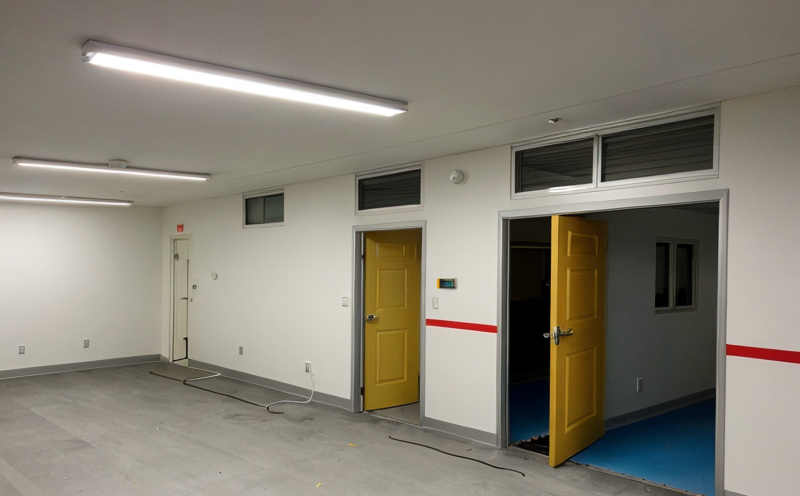IEC 62386 DALI Emergency Lighting Testing and Control Systems
The International Electrotechnical Commission (IEC) Standard IEC 62386 defines the requirements for digital addressable lighting interface (DALI) control systems used in lighting applications. This standard is pivotal in ensuring that emergency lighting systems are not only reliable but also energy-efficient and interoperable with other building automation systems.
The DALI protocol allows for precise control of individual luminaires, which makes it particularly suitable for emergency lighting testing where specific light levels need to be maintained during critical situations. The testing focuses on verifying the performance, safety, and compliance of these systems under various scenarios that simulate real-world conditions such as power failures or fire alarms.
During IEC 62386 DALI testing, we use state-of-the-art equipment designed to replicate environmental stressors like temperature changes, humidity variations, and voltage fluctuations. Our team ensures that all tests are conducted according to the latest international standards, including IEC 62386-1 for control gear and IEC 62386-5 for network interface.
The process involves several key steps:
- Initial calibration of the testing equipment using certified reference lamps
- Configuration of the DALI network to simulate real-world installations
- Application of stress tests to evaluate system robustness and reliability
- Verification of compliance with IEC standards through detailed logging and recording of test parameters
- Data analysis to ensure all specified performance criteria are met
- Preparation of comprehensive reports detailing the results of each test
The outcome of this testing ensures that emergency lighting systems function correctly even under adverse conditions, thereby enhancing safety standards in buildings and facilities.
In summary, IEC 62386 DALI testing is essential for quality managers, compliance officers, R&D engineers, and procurement teams who are responsible for ensuring that their facilities meet stringent regulatory requirements. By adhering to this standard, organizations can enhance the reliability and efficiency of their emergency lighting systems.
Benefits
- Ensures compliance with international standards for DALI control systems
- Improves system reliability by simulating real-world operating conditions
- Aids in identifying potential issues before they escalate into costly failures
- Facilitates interoperability between different components of the lighting network
- Reduces downtime and maintenance costs through early detection of faults
- Maintains energy efficiency by optimizing light levels during emergencies
- Safeguards public safety in critical facilities such as hospitals, airports, and high-rise buildings
Why Choose This Test
- Comprehensive Coverage: Our testing covers all aspects of the DALI protocol relevant to emergency lighting systems.
- State-of-the-Art Equipment: Utilize advanced instrumentation that meets the highest industry standards.
- Expertise and Experience: Leveraging years of experience in lighting system testing, our team provides accurate and reliable results.
- Compliance with Standards: Ensuring strict adherence to IEC 62386 and other relevant international standards.
- Robust Reporting: Detailed reports that provide actionable insights for continuous improvement.
- Rapid Turnaround Time: Efficient testing processes allow for quick turnaround times, minimizing disruption to operations.
Quality and Reliability Assurance
The importance of quality and reliability in emergency lighting systems cannot be overstated. These systems are critical during emergencies when they must function flawlessly to ensure the safety of occupants. Our testing process is designed to identify any weaknesses or discrepancies that could compromise system performance.
During our tests, we employ a multi-faceted approach to assess various parameters including light output, color temperature, switching times, and overall stability under different environmental conditions. We also conduct functional checks to ensure that the systems respond correctly to both manual and automatic commands.
In addition to these technical evaluations, we also perform comprehensive safety assessments to guarantee compliance with all relevant regulations and guidelines. This includes checking for any potential hazards such as electrical shock risks or excessive heat generation.
The results of our testing are rigorously analyzed to provide clients with a thorough understanding of their system's capabilities and limitations. Our goal is not only to meet but also exceed the expectations set by international standards, ensuring that every aspect of the emergency lighting systems meets the highest quality benchmarks.





